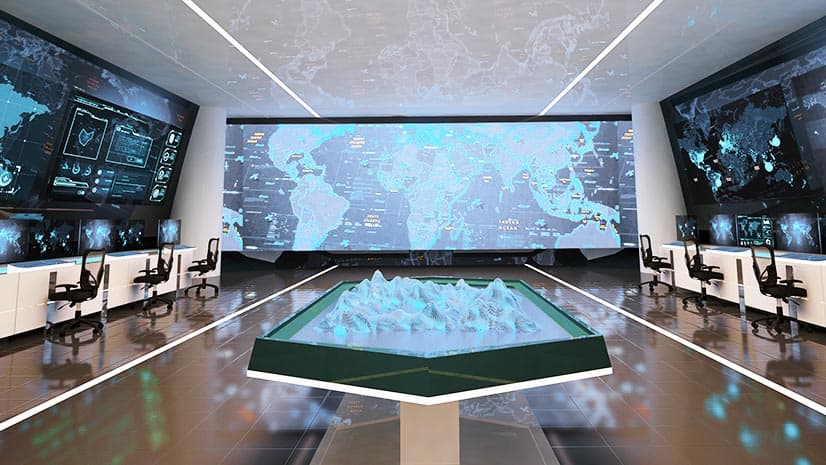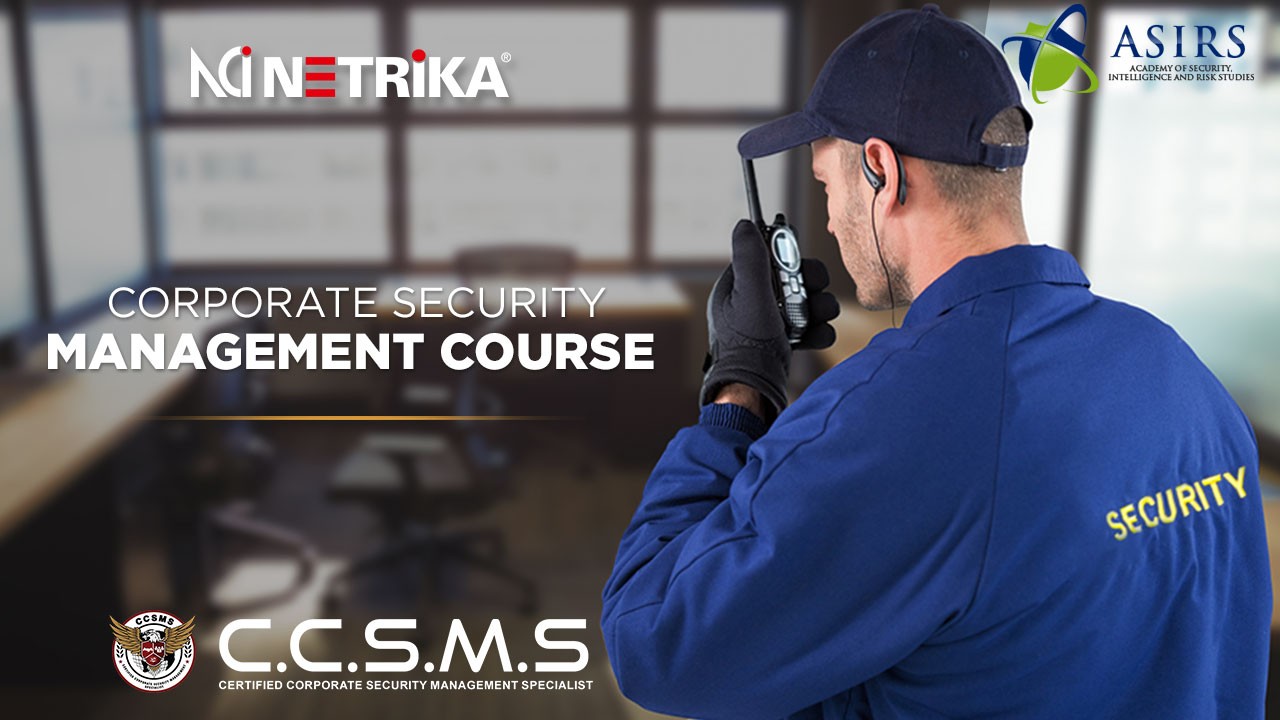Corporate Security Demystified: Enhancing Your Company Defenses
From Cybersecurity to Physical Procedures: Strengthening Company Security in a Transforming World
By incorporating the staminas of both cybersecurity and physical safety, business can develop an extensive defense technique that attends to the diverse variety of risks they deal with. In this conversation, we will certainly discover the altering risk landscape, the demand to integrate cybersecurity and physical security, the execution of multi-factor verification actions, the importance of employee recognition and training, and the adjustment of protection measures for remote labor forces. By taking a look at these crucial areas, we will certainly obtain useful insights right into how organizations can reinforce their business safety and security in an ever-changing globe.
Comprehending the Changing Hazard Landscape
The progressing nature of the modern globe demands a thorough understanding of the altering threat landscape for reliable business security. In today's interconnected and electronic age, hazards to business security have ended up being much more intricate and advanced. As technology advances and companies come to be increasingly dependent on electronic framework, the potential for cyberattacks, information violations, and other safety and security breaches has actually considerably enhanced. It is important for companies to stay notified and adjust their safety determines to resolve these developing dangers.
One key element of comprehending the transforming threat landscape is acknowledging the various sorts of hazards that companies face. Cybercriminals are constantly creating new methods to manipulate vulnerabilities in computer systems and networks. These risks can range from malware and ransomware strikes to phishing rip-offs and social design methods. In addition, physical threats such as theft, criminal damage, and company espionage remain common issues for companies.
Tracking and examining the danger landscape is crucial in order to identify possible dangers and vulnerabilities. This entails staying upgraded on the most recent cybersecurity patterns, analyzing danger knowledge reports, and conducting normal risk analyses. By recognizing the altering threat landscape, organizations can proactively execute appropriate safety and security measures to reduce risks and shield their possessions, credibility, and stakeholders.
Integrating Cybersecurity and Physical Security
Integrating cybersecurity and physical security is critical for detailed corporate security in today's electronic and interconnected landscape. As organizations significantly rely upon modern technology and interconnected systems, the boundaries in between physical and cyber threats are ending up being blurred. To properly protect versus these threats, an all natural method that incorporates both cybersecurity and physical safety and security steps is vital.
Cybersecurity concentrates on safeguarding electronic assets, such as systems, networks, and information, from unauthorized gain access to, interruption, and burglary. Physical safety and security, on the other hand, includes measures to secure physical assets, individuals, and centers from susceptabilities and threats. By integrating these two domain names, companies can address vulnerabilities and dangers from both digital and physical angles, thus improving their general protection position.
The combination of these 2 self-controls permits for a more detailed understanding of protection risks and enables a unified feedback to occurrences. Physical access controls can be improved by integrating them with cybersecurity protocols, such as two-factor authentication or biometric identification. Cybersecurity actions can be complemented by physical safety actions, such as security video cameras, alarm systems, and safe gain access to points.

Executing Multi-Factor Verification Measures
As companies increasingly prioritize detailed security actions, one effective method is the execution of multi-factor authentication measures. Multi-factor authentication (MFA) is a security method that needs customers to supply multiple forms of identification to access a system or application. This technique adds an additional layer of protection by integrating something the customer understands, such as a password, with something they have, like a fingerprint or a safety and security token.
By executing MFA, companies can considerably improve their protection stance - corporate security. Traditional password-based authentication has its restrictions, as passwords can be quickly jeopardized or failed to remember. MFA minimizes these threats by including an added verification variable, making it harder for unapproved people to get to delicate details
There useful source are numerous kinds of multi-factor authentication techniques offered, including biometric verification, SMS-based verification codes, and equipment tokens. Organizations need to analyze their certain needs and select the most appropriate MFA service for their needs.
However, the execution of MFA must be meticulously intended and performed. It is important to strike an equilibrium in between protection and functionality to avoid individual disappointment and resistance. Organizations ought to also take into consideration potential compatibility issues and give appropriate training and support to ensure a smooth transition.
Enhancing Employee Recognition and Training
To reinforce corporate protection, organizations should focus on enhancing employee understanding and training. Lots of protection breaches happen due to human error or lack of understanding.
Reliable worker understanding and training programs must cover a wide variety of topics, consisting of information defense, phishing attacks, social design, password hygiene, and physical safety actions. These programs should be customized to the specific requirements and obligations of different worker roles within the company. Regular training workshops, sessions, and simulations can assist workers establish the essential abilities and understanding to respond and recognize to protection hazards properly.
Moreover, companies ought to encourage a society of security awareness and give continuous updates and reminders to keep staff members notified about the current risks and mitigation methods. This can be done via interior communication networks, such as newsletters, intranet sites, and email campaigns. By cultivating a security-conscious workforce, companies can substantially decrease the likelihood of security occurrences and protect their useful possessions from unapproved access or concession.

Adapting Security Steps for Remote Workforce
Adapting corporate security steps to fit a remote labor force is crucial in guaranteeing the defense of delicate details and assets (corporate security). With the increasing trend of remote job, companies have to implement appropriate safety and security measures to reduce the risks connected with this new method of functioning
One crucial aspect of adjusting protection measures for remote job is establishing protected interaction channels. Encrypted messaging platforms and virtual private networks (VPNs) can aid safeguard sensitive information and prevent unapproved accessibility. see this site In addition, companies need to implement making use of strong passwords and multi-factor verification to enhance the security of remote accessibility.
An additional crucial consideration is the execution of safe remote gain access to services. This involves offering employees with secure accessibility to business resources and information with virtual desktop computer facilities (VDI), remote desktop web link methods (RDP), or cloud-based remedies. These modern technologies make sure that sensitive details continues to be protected while making it possible for workers to execute their functions efficiently.

Finally, detailed safety understanding training is vital for remote staff members. Educating sessions must cover finest methods for firmly accessing and handling sensitive info, recognizing and reporting phishing efforts, and maintaining the overall cybersecurity health.
Final Thought
To conclude, as the danger landscape remains to develop, it is essential for organizations to reinforce their protection gauges both in the cyber and physical domains. Incorporating cybersecurity and physical security, executing multi-factor authentication procedures, and enhancing staff member understanding and training are crucial actions in the direction of accomplishing robust company security. Additionally, adjusting protection procedures to accommodate remote labor forces is vital in today's transforming globe. By applying these steps, companies can alleviate dangers and safeguard their valuable assets from potential threats.
In this conversation, we will certainly check out the transforming danger landscape, the need to incorporate cybersecurity and physical safety and security, the execution of multi-factor verification procedures, the importance of staff member recognition and training, and the adjustment of security actions for remote labor forces. Cybersecurity measures can be matched by physical security steps, such as surveillance cameras, alarms, and safe and secure access factors.
As companies progressively prioritize extensive protection steps, one efficient technique is the application of multi-factor verification actions.In conclusion, as the danger landscape proceeds to advance, it is crucial for organizations to reinforce their security measures both in the cyber and physical domain names. Integrating cybersecurity and physical protection, executing multi-factor authentication procedures, and improving staff member awareness and training are vital actions in the direction of attaining robust business safety.